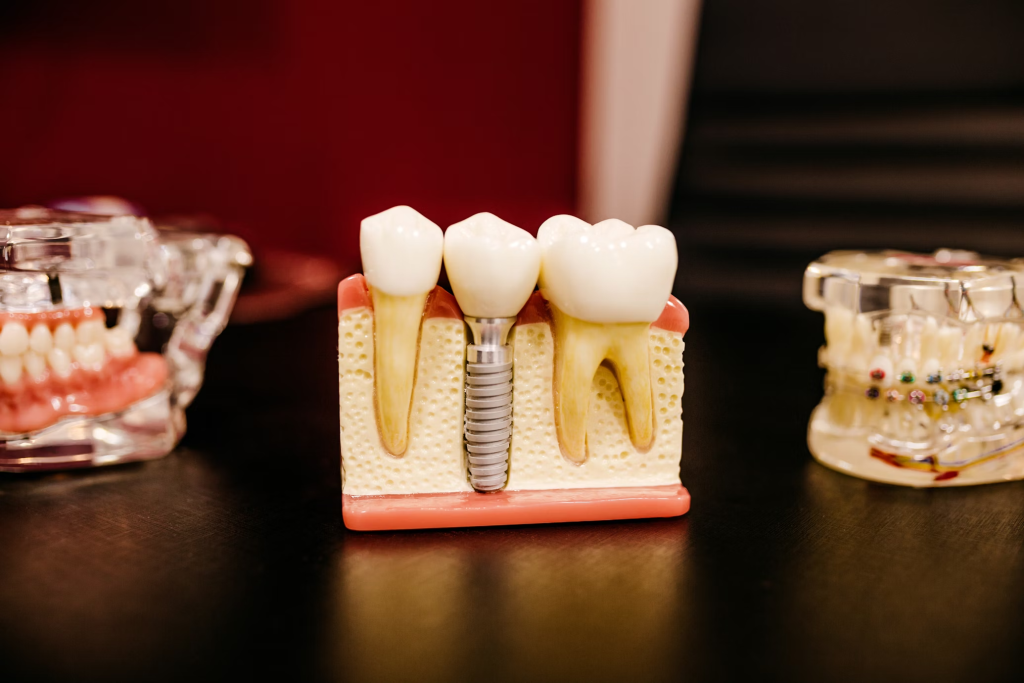Dental implants are a popular and highly effective solution for replacing missing or damaged teeth. They not only restore the function of your mouth but also improve the aesthetic appearance of your smile. Over the years, advancements in dental technology have led to the development of various types of dental implants.

These implants are designed to cater to different needs, whether you’re looking for a single tooth replacement or a full arch restoration. In this guide, we’ll delve into the different types of dental implants, how they work, and which one might be best suited for you. Whether you’re considering dental implants as a long-term solution or are exploring your options, understanding the types of implants can help you make an informed decision.
Click Browse Around This Web-Site For More Details
Types Of Dental Implants
There are several types of dental implants, each designed for different situations. The choice of implant depends on the location of the missing teeth, the condition of the jawbone, and individual preferences. Let’s explore each type in more detail.
Endosteal Implants
Endosteal implants are the most commonly used type of dental implant. These implants are placed directly into the jawbone. They are typically made of titanium, although other materials such as zirconia are also used. Once the implant is placed, the bone gradually fuses with the implant through osseointegration, providing a stable foundation for the replacement tooth.
Endosteal implants are suitable for patients with healthy jawbones and are often used for single or multiple tooth replacements. They can support crowns, bridges, or dentures, making them highly versatile. Depending on the patient’s needs, an endosteal implant can be used to replace one tooth or several missing teeth.
Pros of Endosteal Implants:
- Highly stable and long-lasting
- Ideal for patients with healthy jawbones
- Versatile, as they can support a range of restorations
- More natural appearance and function compared to traditional dentures
Cons of Endosteal Implants:
- Requires a healthy, dense jawbone for successful placement
- It may require bone grafting if the bone is insufficient
- Surgical procedure required for placement
Subperiosteal Implants
Subperiosteal implants are less common than endosteal implants and are used when the jawbone is too thin or weak to support an endosteal implant. Instead of being placed directly into the jawbone, subperiosteal implants sit just beneath the gum tissue and rest on top of the jawbone. These implants are designed for patients who have insufficient bone density but still want the benefits of dental implants.
Subperiosteal implants are custom-made to fit the patient’s jawbone structure. They typically consist of a metal framework with posts that protrude through the gum to support the artificial tooth. Because of their placement, subperiosteal implants are considered less stable than endosteal implants, but they can still provide a functional and aesthetically pleasing solution for patients with limited bone mass.
Pros of Subperiosteal Implants:
- Ideal for patients with insufficient jawbone density
- Can provide a stable foundation for replacement teeth
- A good option for patients who do not want traditional dentures
Cons of Subperiosteal Implants:
- Less stable compared to endosteal implants
- Not as widely used as endosteal implants
- Requires more complex surgical procedures
- It may not last as long as endosteal implants
Zygomatic Implants
Zygomatic implants are a specialised type of dental implant used in cases where the jawbone is severely compromised, such as after bone loss due to gum disease or trauma. Instead of being placed in the jawbone, zygomatic implants are anchored into the zygomatic bone (cheekbone), which is much denser and more stable than the jawbone in many cases.
Zygomatic implants are typically used when there is not enough bone in the upper jaw to support traditional implants. They offer a solution for patients who may not be candidates for standard endosteal implants and wish to avoid bone grafting procedures.
Pros of Zygomatic Implants:
- Suitable for patients with significant bone loss in the upper jaw
- Can provide immediate support for dentures or other restorations
- Reduces the need for bone grafting procedures
Cons of Zygomatic Implants:
- More complex surgical procedure
- Requires a high level of expertise from the implant surgeon
- It may not be suitable for all patients
All-On-4 Implants
The All-on-4 dental implant technique is a popular solution for patients who are missing most or all of their teeth in one or both arches. As the name suggests, the All-on-4 method uses only four implants to support a full arch of teeth. This innovative approach maximises the use of available bone by strategically placing the implants at specific angles to provide optimal stability.
The All-on-4 technique offers the benefits of dental implants, such as improved stability and a more natural appearance, without the need for bone grafting. The procedure can often be completed in a single day, providing patients with a functional set of teeth immediately after the implants are placed.
Pros of All-on-4 Implants:
- Restores a full set of teeth with only four implants
- Faster recovery time compared to traditional implant procedures
- Avoids the need for bone grafting in many cases
- Immediate function, with temporary teeth provided right after placement
Cons of All-on-4 Implants:
- It is not suitable for all patients, particularly those with insufficient bone in the upper jaw
- Requires careful planning and precise placement of implants
- It can be more expensive than traditional implant methods
Mini Implants
Mini implants are smaller versions of traditional dental implants and are typically used in cases where the jawbone is too narrow to support standard implants. These implants are commonly used to secure lower dentures, providing added stability and reducing the need for adhesives. Mini implants are also used for single-tooth replacements in some cases.
Due to their smaller size, mini implants require less bone density than traditional implants and can often be placed without the need for bone grafting. They are a more affordable option for patients looking for dental implants but may not provide the same level of long-term stability as larger implants.
Pros of Mini Implants:
- Less invasive than traditional implants
- Suitable for patients with narrow jawbones
- It can be used to stabilise dentures
- More affordable option compared to standard implants
Cons of Mini Implants:
- It may not be suitable for all patients
- Less durable than traditional implants
- Not ideal for full tooth replacements in most cases
Single-Tooth Implants
Single-tooth implants are designed to replace one missing tooth. This type of implant involves placing a single titanium post into the jawbone, which then supports a single crown. This is an ideal solution for individuals who have lost a single tooth but still have a healthy surrounding jawbone and gums.
Single-tooth implants offer a long-term, stable, and aesthetic solution for replacing a single tooth. They function and look just like natural teeth and do not require altering the adjacent teeth, as is the case with traditional dental bridges.
Pros of Single-tooth Implants:
- Natural appearance and function
- Do not require altering adjacent teeth
- Highly durable and long-lasting
- Preserve the integrity of the jawbone
Cons of Single-tooth Implants:
- Requires a healthy jawbone for successful placement
- Longer treatment time compared to bridges or dentures
- Higher upfront cost than traditional bridges or dentures
Conclusion
Dental implants are a transformative solution for patients seeking to replace missing or damaged teeth. With various types of implants available, including endosteal, subperiosteal, zygomatic, All-on-4, mini implants, and single-tooth implants, there is a solution for virtually every need. The choice of implant depends on several factors, such as the amount of available jawbone, the number of teeth to be replaced, and individual preferences.
If you’re considering dental implants, it’s important to consult with a qualified dental professional to determine the best option for your needs. Whether you’re replacing a single tooth or restoring a full arch, dental implants can provide long-term, reliable, and natural-looking results that can greatly improve both the function and appearance of your smile.
Frequently Ask Question
Are Dental Implants Painful?
While the idea of implant surgery can sound intimidating, most patients report that the procedure itself is not very painful, especially with the use of local anaesthesia or sedation. After the procedure, mild discomfort or swelling may occur, but this can generally be managed with over-the-counter pain relief and ice packs. The pain typically subsides after a few days to a week. It’s important to follow the dentist’s post-operative care instructions to reduce discomfort and promote healing.
How Much Do Dental Implants Cost In Australia?
The cost of dental implants in Australia can vary significantly depending on factors such as the type of implant, the location of the clinic, and whether additional procedures (like bone grafting) are required. On average, a single dental implant, including the crown, can cost between $3,000 and $6,000.
However, the price can go higher if more complex procedures are needed. It’s advisable to consult with a dental professional for an accurate estimate based on individual needs and to check if the procedure is covered by private health insurance.
What Is The Recovery Time After Dental Implant Surgery?
Recovery after dental implant surgery typically takes several months, as the implant needs time to fuse with the jawbone in a process called osseointegration. Initially, you may experience swelling, bruising, and discomfort for a few days to a week. Full recovery can take anywhere from 3 to 6 months, depending on the complexity of the surgery and individual healing rates.
During this time, it’s crucial to follow post-operative care instructions, such as avoiding certain foods and activities, to ensure proper healing and reduce the risk of complications.
